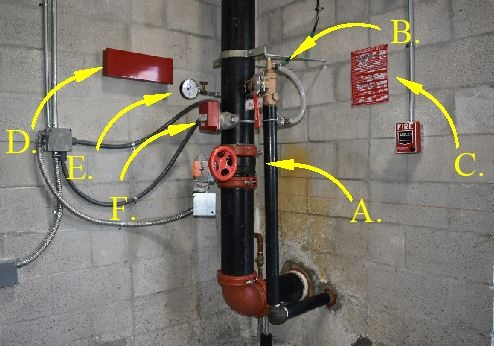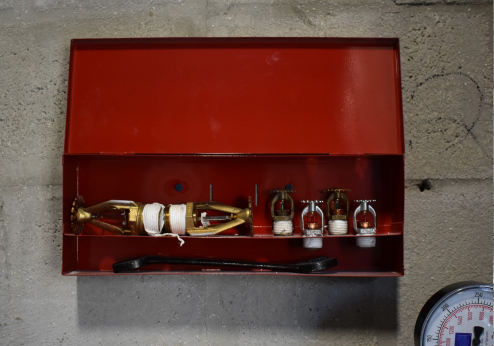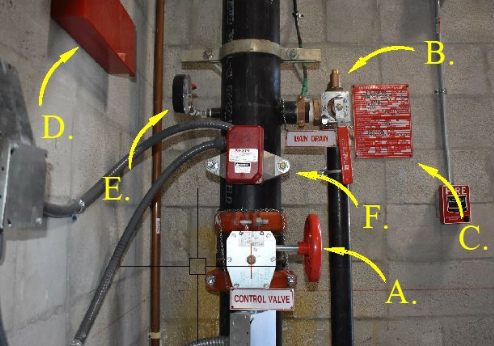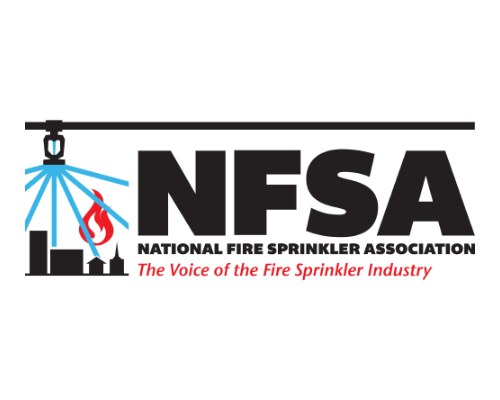Greater Ft. Lauderdale (954) 504-1007
estimating@brigadefireprotection.com
Inspections
Sprinkler systems are required to be inspected on a regular basis by a licensed fire sprinkler contractor to ensure their proper operation.
Email us at: wh@brigadefireprotection.com for information about our Inspection services.
An inspection would involve checking that the system is not impaired by something such as a closed sprinkler control valve, checking that sprinkler heads are not corroded or painted, and that storage does not block the discharge of a sprinkler head.
During an inspection, the sprinkler system is flowed and pressures are recorded and an inspection tag will be placed on the control valve. Then, an inspection report will be provided to the building owner. Owners should have a copy of NFPA 25 so as to be aware of their requirements and the requirements of the inspecting sprinkler contractor.
Anatomy of a Fire Sprinkler System
A. The System Control Valve. This valve is to remain "open" at all times and must be monitored by an alarm company (most cases). The valve shown is a Butterfly Valve with a built-in tamper Switch. Sometimes the Control Valve doubles as the valve(s) on the system Backflow Preventer outside the building. Control Valves must, if accessible by the public, be chained and locked. Sprinkler System Control Valves are required to be "indicating," meaning they display whether they are "open" or "closed." Control Valves are monitored by a Tamper Switch. Being a mechanical device they will sometimes fail and must be replaced.
Note that in the event of a break in the piping (and serious, sudden water damage) building personnel can close this valve and then open the Main Drain all the way. This hopefully will slow and stop the water pouring out within the building. At this point the system's alarms should be ringing and the Fire Department would be responding to put out a fire.
B. Main Drain Valve. When servicing a system, we would have to place the alarms on "test," close the Control Valve, and open the Main Drain Valve. Sometimes other auxiliary drains would need to be located and drained. When performing an NFPA 25 Inspection, the Main Drain Valve would be opened to record the system's residual pressure.
C. Hydraulic Placard. When systems are installed, the installer must place a placard which describes the hydraulic characteristics. This is then used to compare with the pressures and flows of the annual inspections.
D. Spare Head Box. Sprinkler systems must have a representative sample of spare heads and appropriate head wrenches.
E. Pressure Gauge(s). As part of NFPA 25 requirements, pressure gauges must be replaced every 5 years.
F. Flow Switch. In the event of a fire, this switch sends a signal to the alarm panel which then sends a signal to the alarm monitoring company. The monitoring company then notifies the Fire Department to respond to the fire. Flow Switches should be operating with a 60 second delay, that is, the flow will begin and then must continue for at least 60 seconds before the alarms go off. This is to avoid false alarms from water moving around in the system. If false alarms are a problem this device would likely need replacing because the delay is not working properly. They are adjustable; however, once the delay moves off of its original setting the device is essentially faulty and should be replaced.



NFPA 25 Inspections, Repairs and Service, Head Re-Locations, Tenant Improvement, Commercial Systems, Residential Systems, Fire Pump Testing, NICET Design and Hydraulic Calculations, NFPA 25 Inspections, ALF Installation and Inspections, Hydrant Flow Testing, Standpipe Systems, Paint Spray Booth Installations, Hose Stations, Rack Storage and ESFR Systems, Antifreeze Systems, Underground Fire Lines, Dry Hydrants
In business since 1999




